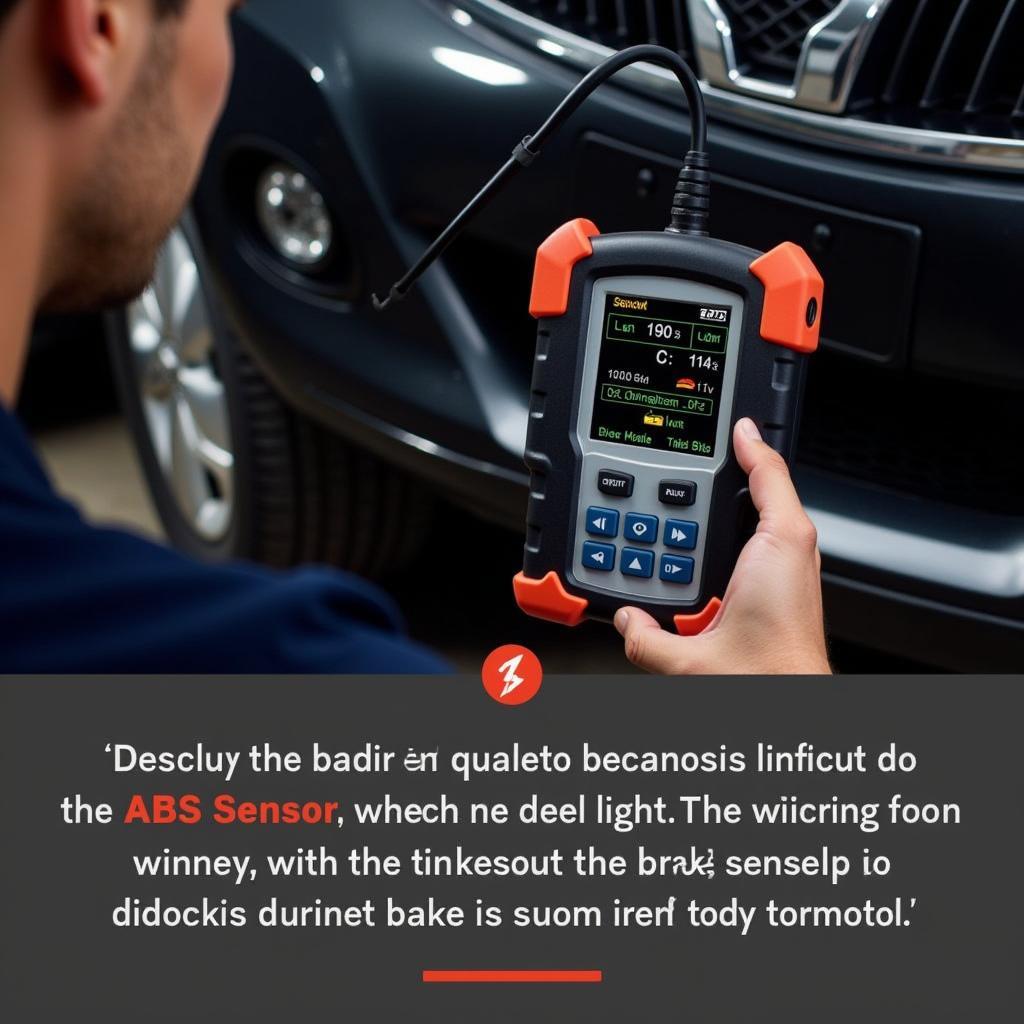Have you ever glanced at your dashboard only to be met with a glaring “disconnect brake” warning light? This unsettling signal is your car’s way of saying there’s a problem with your braking system, and it’s crucial to address it promptly. While this warning light can be triggered by a range of issues, from a simple parking brake engagement to a more complex electronic malfunction, understanding the potential causes and solutions can save you time, money, and potential danger on the road.
Understanding Your Car’s Brake Warning System
Modern vehicles are equipped with a sophisticated network of sensors and electronic control units (ECUs) that constantly monitor various systems, including the brakes. The “disconnect brake” warning light, often accompanied by an exclamation mark or the word “BRAKE” in bold, illuminates when these sensors detect an anomaly in the braking system. This warning light doesn’t specify the exact problem but serves as a general alert, prompting you to investigate and address the issue.
Common Causes of a Disconnect Brake Warning Light
Here are some of the most frequent culprits behind a disconnect brake warning light:
-
Engaged Parking Brake: This is the most straightforward and easily remedied cause. Always double-check that your parking brake is fully disengaged before driving.
-
Low Brake Fluid: Brake fluid is the lifeblood of your braking system, transmitting the force from your foot on the pedal to the brake calipers. A low fluid level, often due to leaks or worn brake pads, can trigger the warning light.
-
Faulty Brake Light Switch: The brake light switch, located near the brake pedal, activates your brake lights when you press the pedal. A malfunctioning switch can disrupt the signal to the ECU, leading to the warning light.
 Faulty Brake Light Switch Close Up
Faulty Brake Light Switch Close Up
-
Worn Brake Pads: Brake pads are designed to wear down over time. When they become too thin, a sensor embedded within the pad can trigger the warning light, signaling the need for replacement.
-
ABS Sensor Issues: The Anti-lock Braking System (ABS) prevents wheel lockup during hard braking. A malfunctioning ABS sensor can disrupt the system’s operation and illuminate the warning light.
 Mechanic Diagnosing ABS Sensor Issue with Diagnostic Tool
Mechanic Diagnosing ABS Sensor Issue with Diagnostic Tool
- Electrical Problems: Wiring issues, loose connections, or a faulty ECU can disrupt communication within the braking system, leading to a false warning light.
Troubleshooting the Disconnect Brake Warning Light
While it’s always recommended to consult a qualified mechanic for any brake-related issues, here’s a step-by-step guide for preliminary troubleshooting:
-
Check the Parking Brake: Ensure your parking brake is fully released. Sometimes, even a slight engagement can trigger the light.
-
Inspect Brake Fluid Level: Locate the brake fluid reservoir (refer to your owner’s manual) and check the fluid level. If it’s low, add the recommended brake fluid type until it reaches the “MAX” line.
-
Examine Brake Lights: Have someone press the brake pedal while you check if all brake lights are functioning correctly. If not, it might indicate a faulty brake light switch.
-
Visual Inspection: Look for any visible signs of leaks, damage, or wear on brake lines, calipers, and pads.
When to Seek Professional Help
If the warning light persists despite your initial checks, or if you suspect a more serious problem, it’s crucial to seek professional help immediately. Driving with a compromised braking system is incredibly dangerous. A qualified mechanic possesses the expertise, tools, and diagnostic equipment to accurately identify and rectify the issue.
Prevention is Key
Regular vehicle maintenance is crucial to prevent brake-related issues. This includes:
- Routine brake inspections: Have your brakes inspected by a certified mechanic at least once a year or as recommended in your owner’s manual.
- Timely brake fluid flushes: Brake fluid degrades over time and absorbs moisture, reducing its effectiveness. Follow your manufacturer’s recommendations for brake fluid replacement intervals.
- Mindful driving habits: Avoid aggressive driving and unnecessary hard braking, as these habits accelerate brake wear.
The Importance of Prompt Action
“Ignoring a disconnect brake warning light is like playing Russian roulette with your safety,” says veteran automotive engineer, Robert Hernandez. “Even if the light seems intermittent, it’s crucial to have the problem diagnosed and resolved promptly. A small issue, if ignored, can escalate into a major safety hazard.”
 Experienced Mechanic Inspecting Car Brake System on Lift
Experienced Mechanic Inspecting Car Brake System on Lift
FAQs About Disconnect Brake Warning Light
Q1: Can I drive my car with the disconnect brake warning light on?
While you might be able to drive a short distance, it’s highly discouraged. The warning light indicates a potential problem with your braking system, and continuing to drive could jeopardize your safety and that of others.
Q2: How much does it cost to fix a disconnect brake warning light?
The repair cost varies widely depending on the underlying cause. A simple fix like a brake light switch replacement might cost a few hundred dollars, while more complex issues like a faulty ABS module could cost significantly more.
Q3: Can I reset the disconnect brake warning light myself?
Attempting to reset the warning light without addressing the root cause is not recommended. It’s essential to fix the underlying problem; otherwise, the light will reappear.
Q4: How can I prevent the disconnect brake warning light from coming on?
Regular vehicle maintenance, including brake inspections, timely brake fluid changes, and mindful driving habits, are crucial to prevent brake-related issues and the accompanying warning light.
Conclusion
A disconnect brake warning light is a serious signal that should never be ignored. By understanding its potential causes, taking necessary precautions, and seeking professional help when needed, you can ensure your safety and maintain your vehicle’s braking system in optimal condition.

